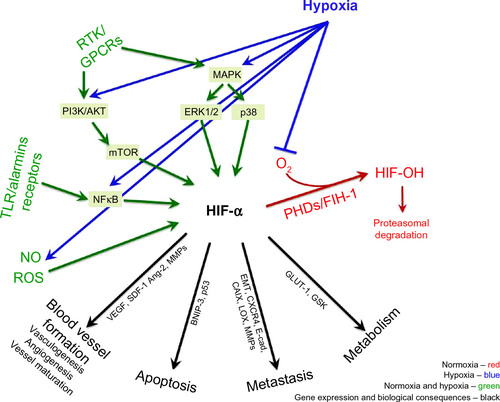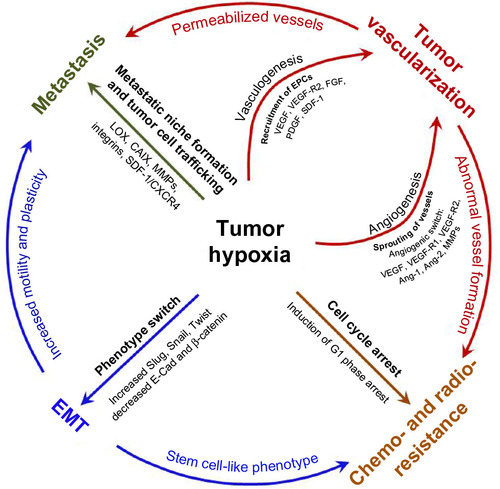Figures & data
Table 1 Comparison of the oxygenation in organs and respective tumors
Figure 1 Regulation of HIF in normoxic and hypoxic conditions.

Figure 2 Hypoxia as a driving force of tumor progression and metastasis.

Register now or learn more
Open access
Table 1 Comparison of the oxygenation in organs and respective tumors
Figure 1 Regulation of HIF in normoxic and hypoxic conditions.

Figure 2 Hypoxia as a driving force of tumor progression and metastasis.

People also read lists articles that other readers of this article have read.
Recommended articles lists articles that we recommend and is powered by our AI driven recommendation engine.
Cited by lists all citing articles based on Crossref citations.
Articles with the Crossref icon will open in a new tab.